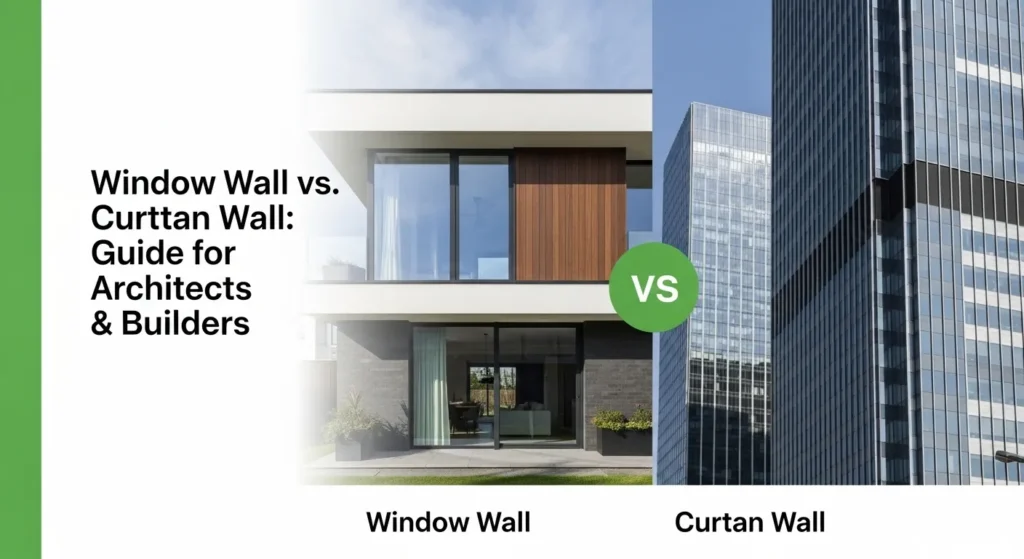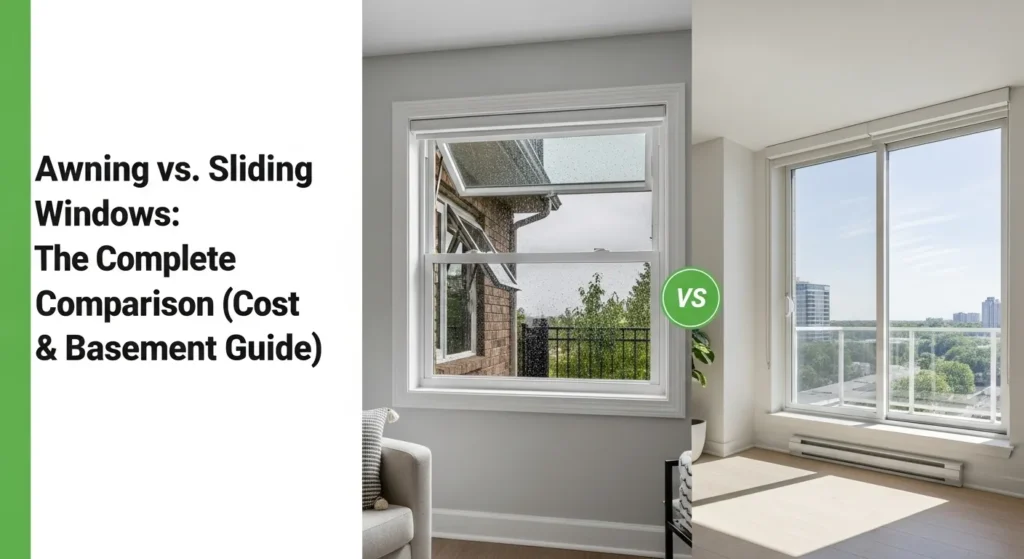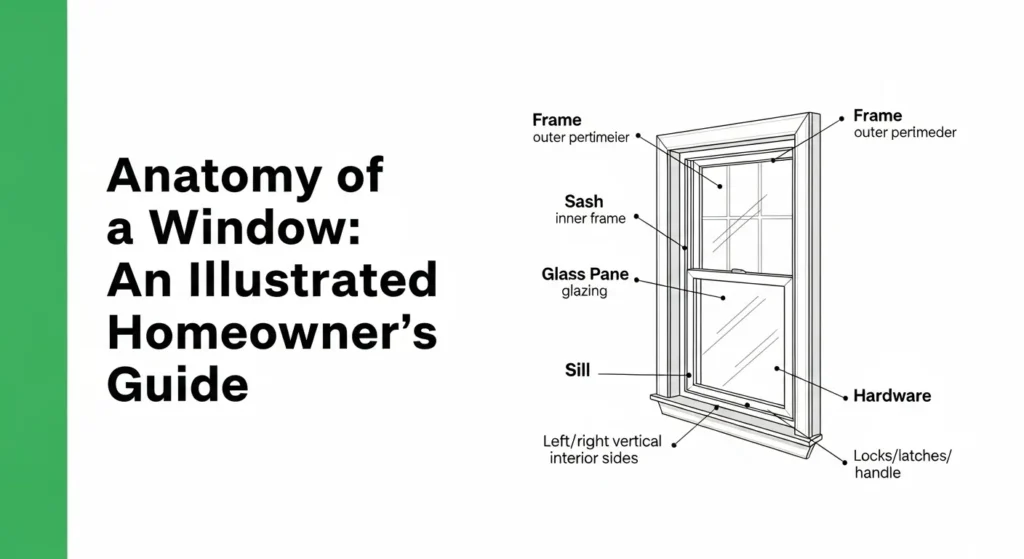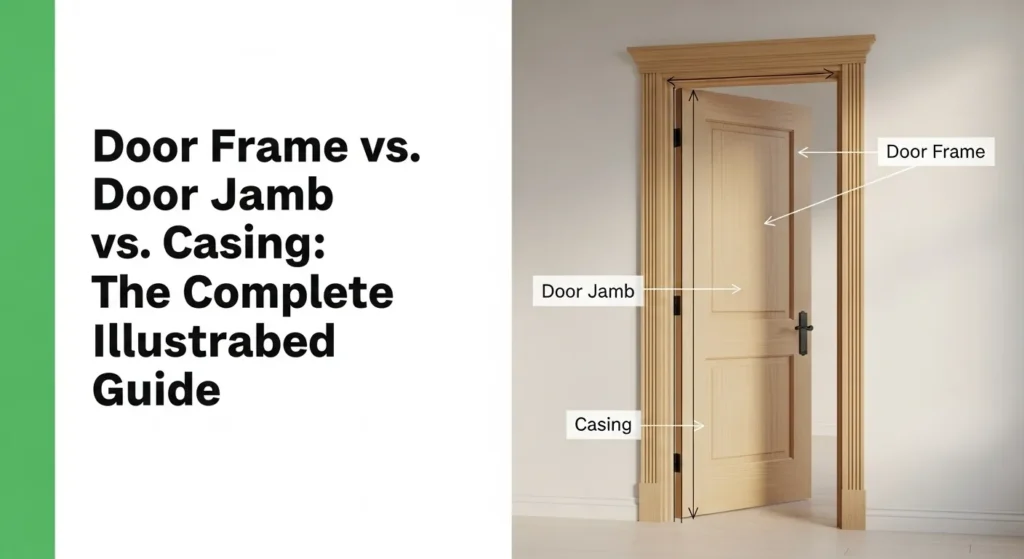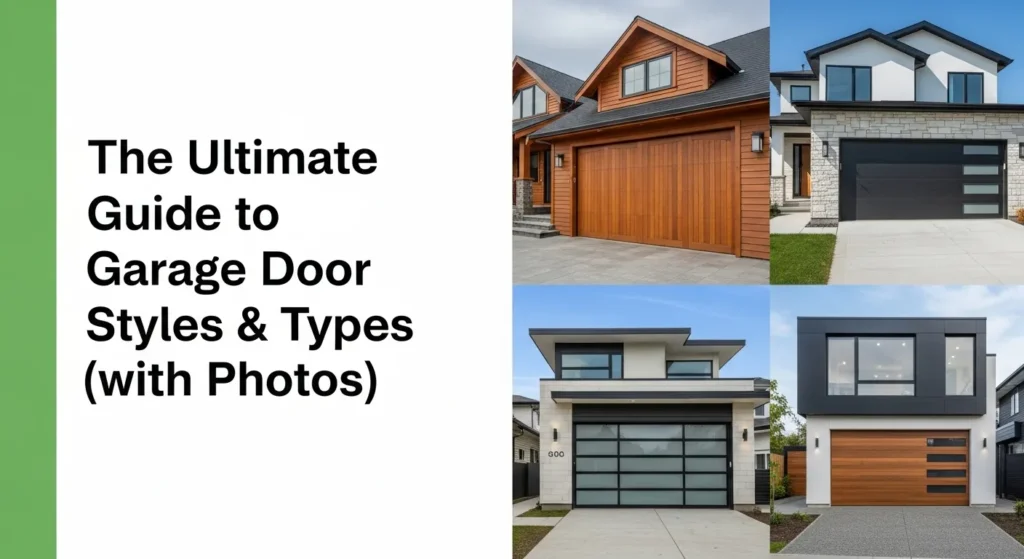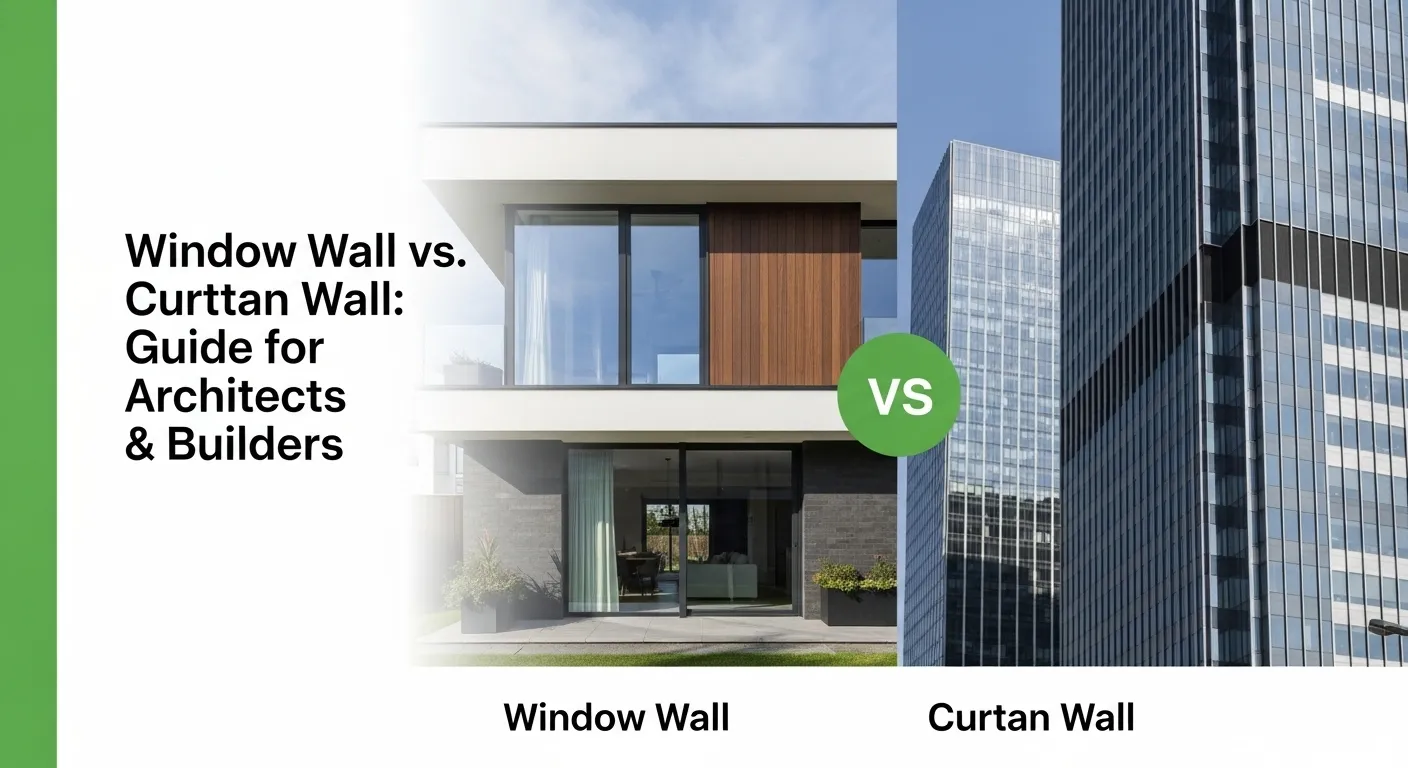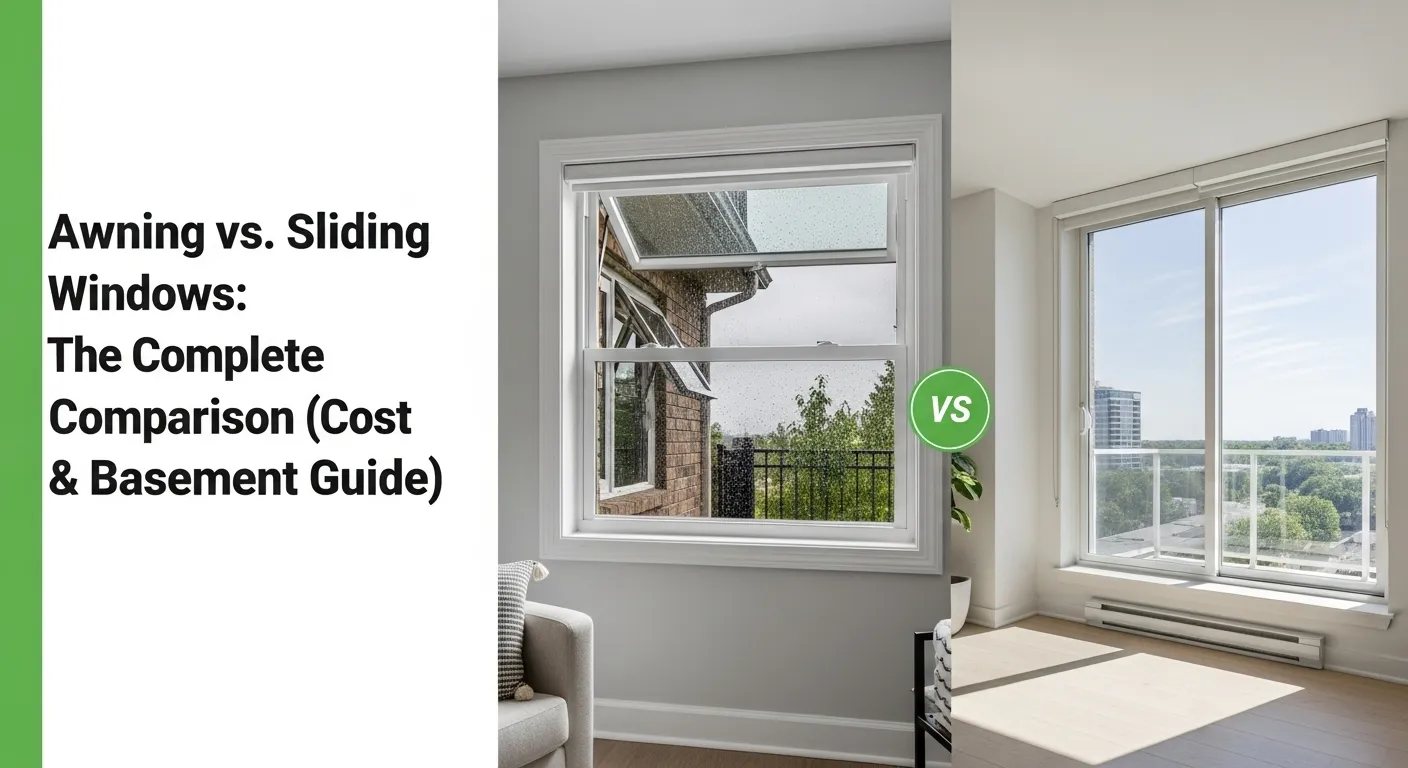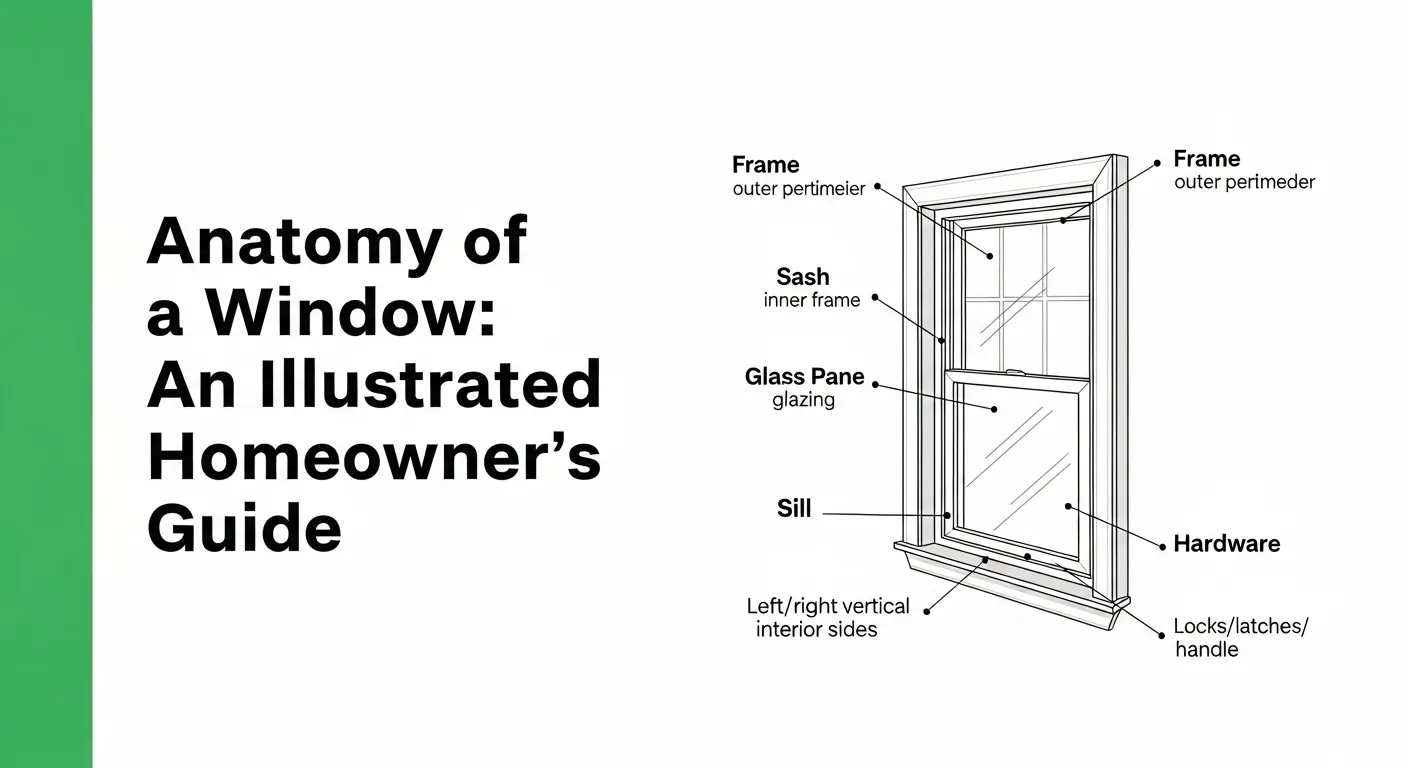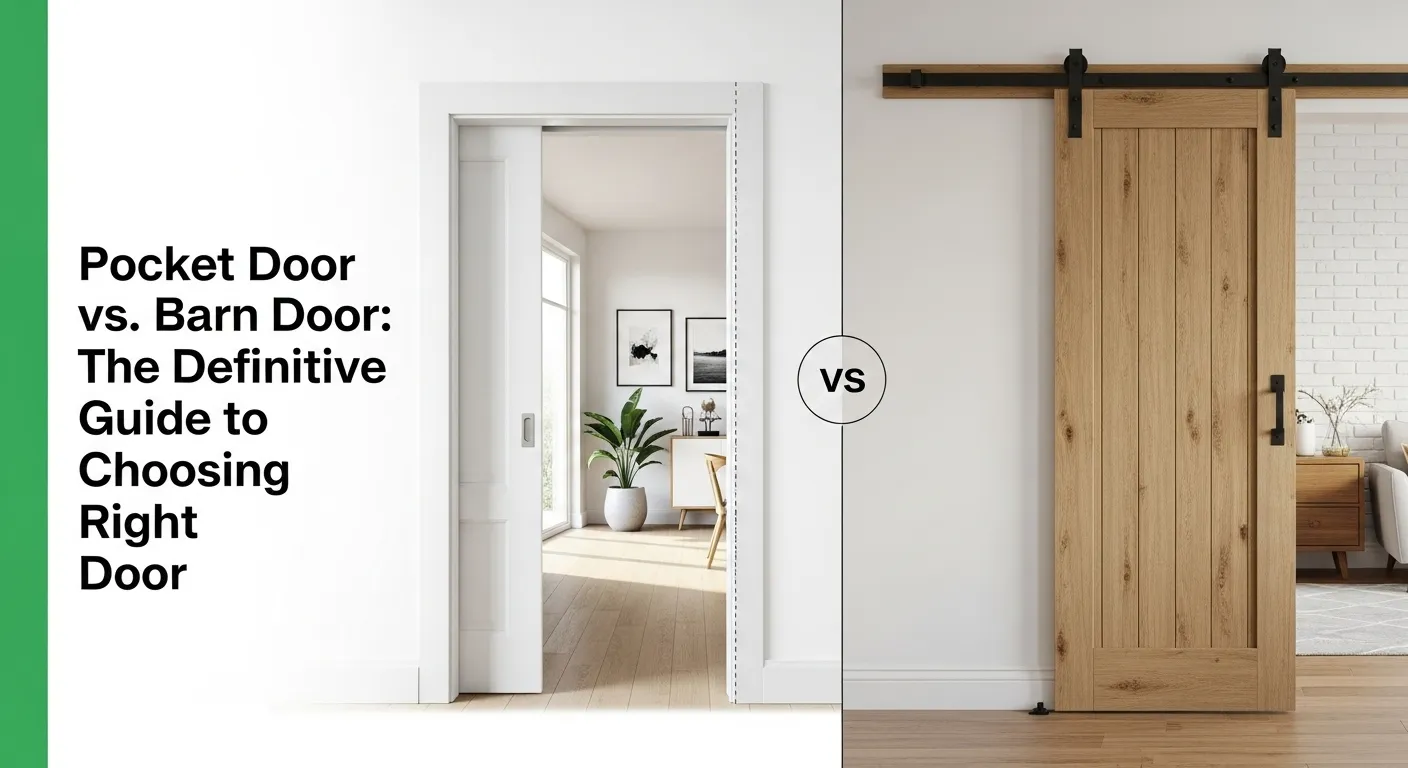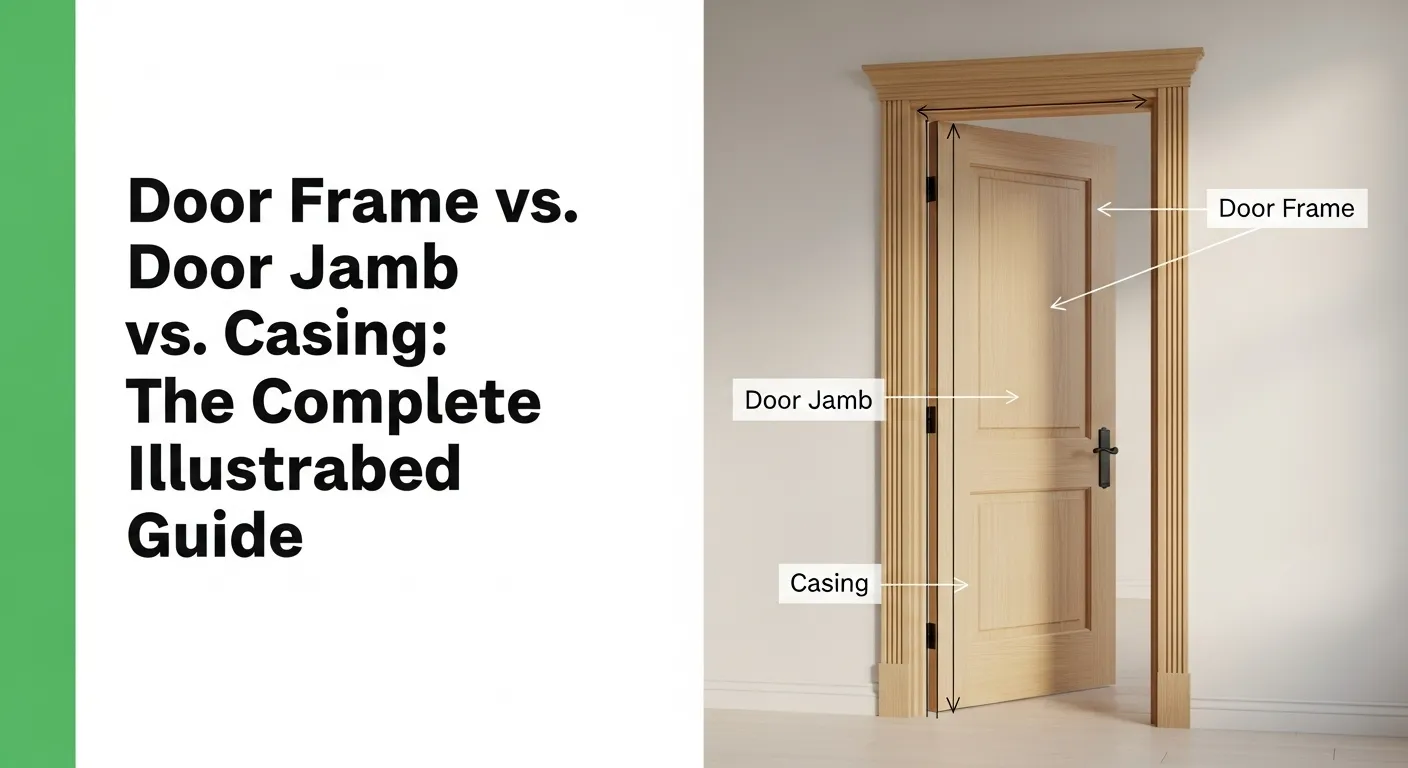Choosing the right window impacts your home’s comfort, energy bills, safety, and budget. This decision becomes even more critical for basements, where egress codes, moisture management, and light are essential concerns.
Awning windows are hinged at the top and crank open from the bottom, offering superior ventilation even in rain and excellent energy efficiency. Sliding windows glide horizontally on tracks, providing cost-effective operation, space-saving design, and the easiest path to meeting egress codes for basement bedrooms.
This guide delivers a detailed head-to-head comparison with a special focus on cost differences (awning windows cost 15–25% more) and basement applications, helping you confidently decide which window fits your project, room, and budget.
For broader window-type comparisons, see Janelas de guilhotina simples vs. janelas de correr.
Awning vs. Sliding Windows: At a Glance
Awning windows cost more (15-25% premium) but excel at energy efficiency and all-weather ventilation. Sliding windows are more affordable and space-efficient and are the standard choice for egress compliance in basement bedrooms.
Tabela de comparação rápida
| Recurso | Janelas de toldo | Janelas de correr |
|---|---|---|
| Operação | Cranks open from bottom; hinged at top | Desliza horizontalmente na pista |
| Ventilação | Excellent; can stay open in light rain | Good; only one panel opens (50% max) |
| Eficiência Energética | Superior (compression seal when closed) | Good (weatherstripping seal) |
| Custo típico | 15-25% more expensive | Mais acessível (simpler design) |
| Best for Basements? | Good for ventilation/privacy (non-bedrooms) | Often better, especially for egress codes |
| Egress Compliant? | Rarely (mechanism obstructs opening) | Sim (common, affordable egress solution) |
| Manutenção | Moderate (crank/hinge lubrication) | Easy (track cleaning) |
| Segurança | Excellent (multi-point locks) | Good (latch locks) |
| Best For… | Kitchens, bathrooms, high-wall placements | Patios, living rooms, basement bedrooms, wide openings |
Atalho de decisão:
- Choose awning if: Energy efficiency and rain-ventilation matter most; not for basement bedrooms
- Choose sliding if budget is key, need egress compliance, or have limited exterior clearance
Are Awning Windows More Expensive? Cost Deep Dive
Yes, awning windows consistently cost 15-25% more than sliding windows of the same size and quality due to mechanical complexity, more hardware components, and precise installation requirements.
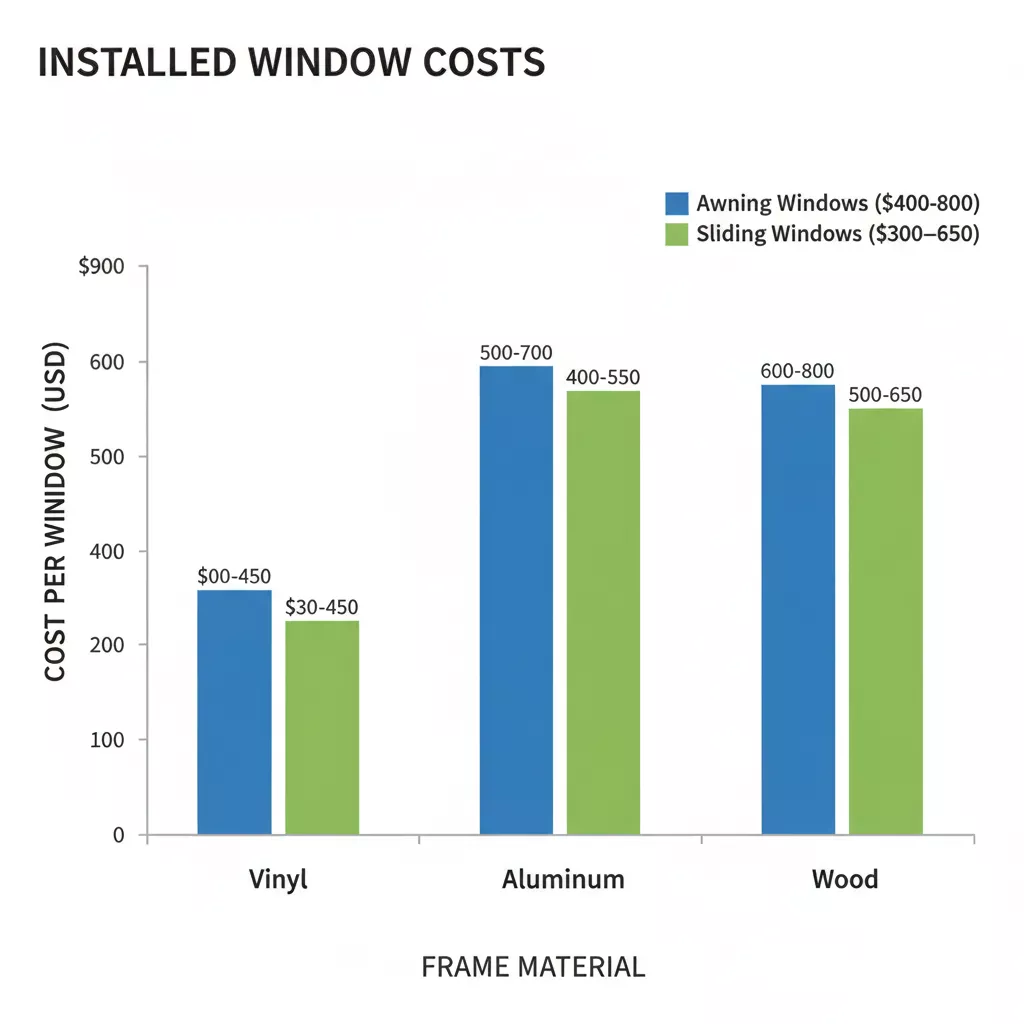
Why Do Awning Windows Cost More?
1. Mechanical complexity
Awning windows use multi-point crank operators, hinges at the top, support arms, and compression seals—all more complex and expensive to manufacture than the simple track-and-roller system of sliding windows.
Component comparison:
- Awning: Crank operator ($40−$80), hinges ($20−$40), support arms ($30−$60), multi-point locks ($25−$50)
- Sliding: Track and rollers ($15−$30), simple latch lock ($10−$25)
2. Installation precision
Awning windows require exact leveling and shimming to ensure the compression seal engages uniformly around all four sides. Improper installation causes air leaks and voided warranties.
Sliding windows are more forgiving—as long as the frame is square and the track is level, operation remains smooth.
3. Material and labor costs
- Awning window installed cost: $400−$800 per window (standard sizes, vinyl frame)
- Sliding window installed cost: $300−$650 per window (same size/material)
- Cost premium: 15-25% for awning vs. sliding
What Factors Influence Final Window Costs?
Both window types vary in price based on:
Frame material:
- Vinil: $300−$650 (most affordable, low maintenance)
- Alumínio: $400−$900 (slim profiles, durability)
- Fibra de vidro: $500−$1,200 (best insulation and longevity)
- Wood/clad wood: $600−$1,500+ (premium aesthetics, requires maintenance)
Glazing package:
- Double-pane, clear glass: Baseline cost
- Double-pane, Low-E, argon fill: +$50−$100 per window
- Triple-pane, Low-E, krypton fill: +$150−$300 per window
Learn more about thermal performance: Compreendendo os valores R e o isolamento de janelas.
Installation type:
- Nova construção: $150−$300 labor per window
- Retrofit/replacement: $200−$500 labor (involves removing old window, repairing opening)
Size and customization:
- Standard sizes: see Tamanho padrão da janela
- Custom dimensions: +20-50% cost premium
- Specialty shapes or hardware finishes: +$100−$400
Explore options: The advantage of custom windows vs. standard windows.
Which Window Is Best for Your Basement? (Egress & Application Guide)
Sliding windows are the best choice for basement bedrooms because they easily meet egress safety codes with large, unobstructed openings and cost less. Awning windows work well for basement bathrooms, utility rooms, or non-bedroom living areas where ventilation and privacy matter more than emergency exit capability.
The Primary Concern: What Are Basement Egress Codes?
Egress definition: A window large enough and accessible enough to serve as an emergency exit, legally required for any basement bedroom in most U.S. and Canadian jurisdictions (IRC Section R310.2).
Minimum egress requirements (typical codes):
- Net clear opening: 5.7 square feet minimum (5.0 sq ft at grade level)
- Minimum height: 24 polegadas
- Minimum width: 20 polegadas
- Maximum sill height: 44 inches above floor
- Window well dimensions: If below grade, well must be ≥9 sq ft with a ladder/steps.
Why this matters: Any basement space used or marketed as a bedroom must have a compliant egress window for occupant safety and resale value. Failure to comply violates building codes and affects insurance/liability.
Source: International Residential Code (IRC) 2021, Section R310.
Why Are Sliding Windows the Egress Champion?
Sliding windows are the most common and cost-effective solution for egress in basement bedrooms.

Advantages for egress:
1. Large, unobstructed opening
When the operable panel slides fully open, the entire opening is clear—no crank mechanism, no sash protruding into the opening. A 36″ × 48″ sliding window easily provides 6+ square feet of clear opening.
2. Horizontal operation
The sash slides parallel to the wall, not outward into the window well. This is critical when the well is narrow or has limited depth.
3. Affordable and code-tested
Sliding egress windows are widely available, competitively priced (400−400−800 installed), and specifically labeled for egress compliance by manufacturers.
4. Easy emergency operation
No cranking required—just unlock and push. Even children and elderly occupants can operate them quickly in an emergency.
Why Are Awning Windows Rarely Egress-Compliant?
Awning windows almost never meet egress codes because the crank mechanism, hinges at the top, and the sash opening into the frame all obstruct the clear opening area required for safe exit.
Obstructions that disqualify awning windows:
- Crank hardware projects into the opening
- Top-hinged sash swings down into the middle of the frame
- Support arms limit maximum opening angle (typically 45-90 degrees)
- Net clear opening falls below 5.7 sq ft minimum, even on large units
Exception: Some manufacturers offer specialty “egress awning” models with breakaway hardware and hinged screens, but these are rare and expensive ($1,200−$2,000+) and still less reliable than sliders.
When Should You Use Awning Windows in a Basement?
Use awning windows in basement bathrooms, laundry rooms, utility areas, or general living spaces (not bedrooms) where ventilation, privacy, and moisture control are priorities but egress is not required.
Ideal basement applications for awning windows:
1. Bathrooms and powder rooms
Awning windows placed high on the wall provide excellent ventilation and privacy without requiring window treatments. They can stay open during showers to vent humidity, even during light rain outside.
2. Laundry and utility rooms
Moisture and odor control are key. Awning windows vent steam and fumes while maintaining security (locked position still allows airflow).
3. Non-bedroom living areas
Family rooms, home theaters, workshops, or craft rooms benefit from awning windows’ energy efficiency and the ability to ventilate during inclement weather.
4. High-wall placement (hopper-style alternative)
Awning windows (or their cousin, hopper windows—hinged at the bottom, opening inward) can be installed near the ceiling to maximize light and air while preserving wall space for furniture and maintaining privacy from exterior foot traffic.
5. Moisture control advantage
Basements are prone to dampness. Awning windows can remain open during light rain, allowing air circulation to reduce humidity and mold risk without water intrusion.
For related moisture concerns, see proper sealing: Como instalar guarnições de janela.
When Should You Use Sliding Windows in a Basement?
Use sliding windows in basement bedrooms (egress mandatory) when you need maximum daylight and view, for budget-conscious projects, or when exterior clearance is limited (narrow window wells).

Ideal basement applications for sliding windows:
1. Bedrooms (non-negotiable)
You need a code-compliant egress window if you plan to use or advertise the room as a bedroom. Sliding windows are the most reliable and affordable solution.
Design inspiration: Mais de 40 ideias para janelas de quarto.
2. Large openings for light and view
When you have a wider, deeper window well, a sliding window can provide an expansive glass area (up to 72″ wide or more) for maximum natural light and an open feel.
3. Budget-driven projects
Finishing a basement on a tight budget? Sliding windows cost 15–25% less than awnings of the same size, and they are easier and faster to install, reducing labor costs.
4. Narrow or shallow window wells
In tight exterior conditions, the awning sash would protrude into the well, blocking drainage, interfering with covers, or simply not fitting. Sliders stay flat against the wall.
5. Easy operation and low maintenance
For rental properties or homes with elderly occupants, sliding windows require no cranking, have fewer moving parts to break, and are intuitive to operate.
Maintenance guide: Substituição de vidros e peças de janelas.
What Is an Awning Window? (Definition and Features)
An awning window is hinged at the top and opens outward from the bottom using a crank handle, creating an “awning” that sheds rain while allowing ventilation. The sash forms a weathertight compression seal when closed, making it one of the most energy-efficient operable window types.
How Do Awning Windows Operate?
Mechanism: A crank operator (handle) turns a gear mechanism that extends support arms, pushing the bottom of the sash outward while the top remains hinged.
Opening angle: Most awning windows open 45-90 degrees, depending on arm design and manufacturer.
Locking: Multi-point locks along the bottom rail engage keepers in the frame when the window is cranked shut, compressing weatherstripping for an airtight seal.
Parts overview: For detailed anatomy, see Parts of a Window e O que é um batente de janela.
Where Are Awning Windows Commonly Installed?
- Banheiros: High on walls for privacy and ventilation
- Cozinhas: Above sinks (doesn’t interfere with faucet)
- Stairwells: Upper walls for light and air circulation
- Basements: Non-bedroom spaces for moisture control
- Clerestory installations: Near rooflines for daylighting
Pros of Awning Windows
Awning windows deliver superior energy efficiency, all-weather ventilation, and excellent security and are ideal for high-wall placements where privacy and moisture control matter.
+ Superior energy efficiency
The compression seal formed when the sash is cranked shut creates an airtight barrier on all four sides, minimizing air infiltration and heat loss.
Performance data:
- Fator U: 0.20-0.28 (double-pane, Low-E, argon)
- Air leakage: 0.10-0.20 cfm/sq ft @ 25 mph (vs. 0.20-0.40 for sliders)
- Energy cost savings: 10-15% better than sliding windows in heating climates
Source: ENERGY STAR window performance criteria.
See thermal details: Compreendendo os valores R e o isolamento de janelas.
+ All-weather ventilation (perfect for damp basements)
The outward-opening sash acts as an awning, shedding rain away from the opening. You can leave the window open during light to moderate rain without water entering the home.
Basement benefit: Reduces humidity, prevents mold, and improves air quality without risking water damage to floors or finishes.
+ Excellent security
Multi-point locks and compression seals make forced entry difficult. The sash cannot be pried open from outside when locked, and the hardware is recessed inside the frame.
+ Ideal for high-wall placement
Crank operation allows placement above countertops, bathtubs, or high on walls (even out of reach) without compromising usability. This is common in basements for privacy and to position windows near ceiling joists.
+ Unobstructed interior view
No meeting rail or center stile divides the glass area (in single-unit awnings), providing a clean sightline.
Cons of Awning Windows
Awning windows cost 15-25% more, project outward (can interfere with window wells or walkways), require exterior cleaning access, and are not suitable for egress in basement bedrooms.
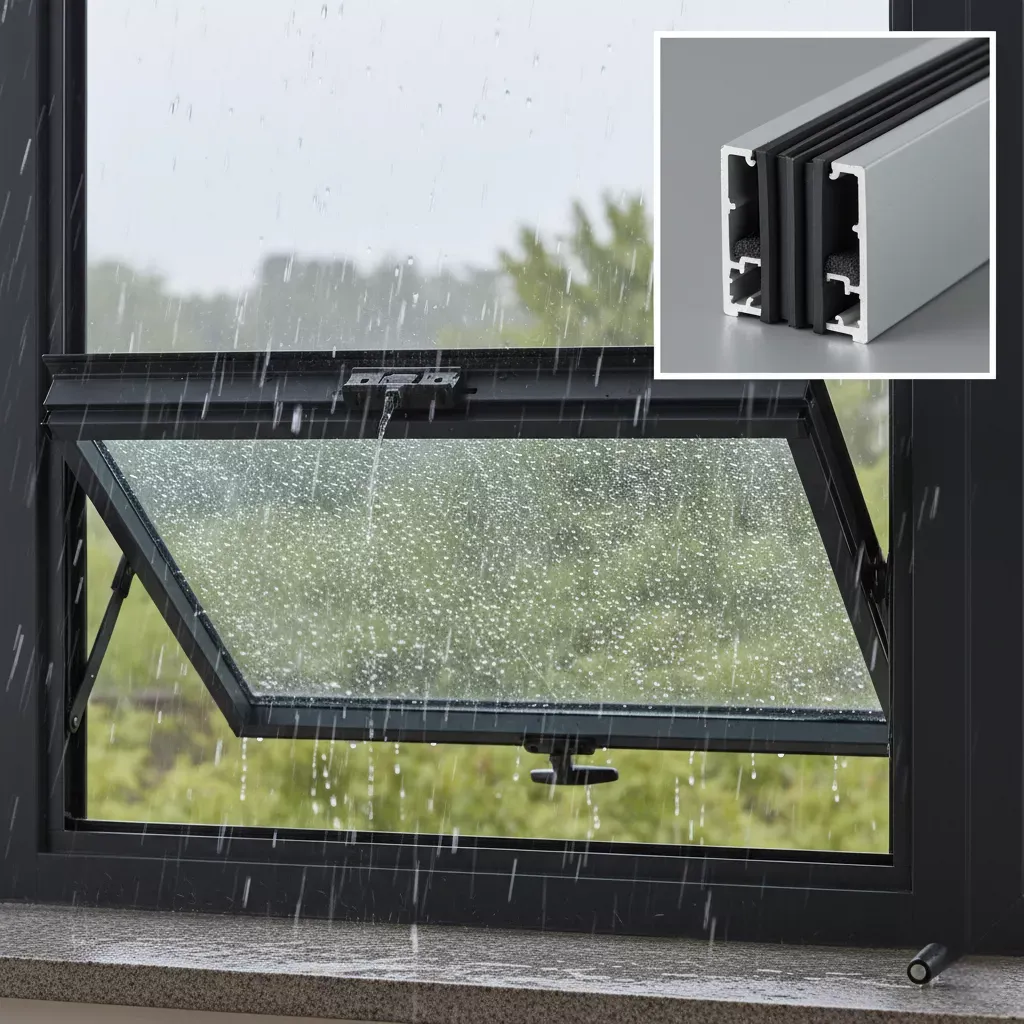
– Higher cost
As detailed earlier, expect to pay 400−400−800+ installed for standard vinyl awning windows, compared to 300−300−650 for sliding windows.
Cost impact: For a basement with 4-6 windows, choosing awnings over sliders adds 600−600−1,200 to the project.
– Exterior obstruction
The sash swings outward 12-24 inches when fully open. This can:
- Block narrow walkways or patios
- Interfere with window wells, covers, or drainage systems
- Conflict with exterior landscaping (shrubs, plants)
Basement concern: In tight window wells, the open sash may touch the well wall, prevent covers from fitting, or block ladder/step access.
– Cleaning challenge
Exterior glass must be cleaned from outside. For second-story or basement installations below grade, this requires ladders, well access, or professional service.
Dica: Some manufacturers offer inward-tilting sash designs for easier cleaning, but these are less common and more expensive.
– Not suitable for egress
As covered above, awning windows rarely meet egress code requirements for basement bedrooms.
Explore opções personalizadas: Custom Awning Windows from Hotian.
What Is a Sliding Window? (Definition and Features)
A sliding window (also called a gliding or horizontal slider) has one or more sashes that slide horizontally along tracks in the frame. One panel is typically fixed, and the other(s) open by sliding left or right.
How Do Sliding Windows Operate?
Mechanism: The operable sash rides on rollers in the bottom track (or top and bottom tracks) and is guided by the jamb channels.
Opening: Simply unlock the latch, grip the pull or handle, and slide the sash horizontally. No cranking, no force—smooth gliding operation.
Locking: A cam lock or hook latch on the meeting rail secures the operable sash to the fixed panel or frame.
Ventilação: Only one panel opens, so maximum ventilation is 50% of the total window area.
Where Are Sliding Windows Commonly Installed?
- Basement bedrooms: Egress compliance
- Living rooms and family rooms: Wide openings for light and view
- Patios and sunrooms: Easy access to outdoor spaces
- Cozinhas: Low-maintenance, wide sightlines
- Banheiros: Affordable, easy to operate
Compare with other operable styles: Janelas de guilhotina simples vs. janelas de correr.

Pros of Sliding Windows
Sliding windows are cost-effective, space-saving, egress-compliant, easy to operate, and ideal for wide openings—making them the top choice for basement bedrooms and budget-conscious projects.
+ Cost-effective (15-25% less than awnings)
Simple design, fewer moving parts, and straightforward installation translate to lower material and labor costs.
Installed cost range: $300−$650 for standard vinyl sliding windows (comparable awnings: $400−$800).
Budget impact: Choosing sliders over awnings for a 6-window basement project saves $600−$1,200.
+ Space-saving design
The sash slides parallel to the wall—no inward or outward swing. This is critical for:
- Interior: Furniture, window treatments, and decor remain unobstructed
- Exterior: Narrow window wells, walkways, or landscaping are not blocked
+ Excellent for egress (the go-to for basement bedrooms)
As covered above, sliding windows are the standard, code-compliant, affordable solution for basement bedroom egress requirements.
+ Easy to operate
No crank handle to turn, no latches to fumble with in the dark. Sliding windows are intuitive and accessible for all ages and abilities.
Acessibilidade: Ideal for elderly occupants, children, or individuals with limited hand strength.
+ Allows for large openings
Sliding windows can span wide openings (up to 72″+ wide) without the structural limitations of hung or casement windows.
Daylight and view: Maximizes glass area for natural light and outdoor connection.
Sizing guide: Average Window Size e Tamanhos de janelas de guilhotina simples.
+ Low maintenance
Fewer parts to lubricate or adjust. Most maintenance involves vacuuming the track and wiping down the rollers annually.
For step-by-step care, see related hung-window troubleshooting: Fixing a Single-Hung Window That Won’t Stay Up.
Cons of Sliding Windows
Sliding windows are less energy efficient than awnings (due to sliding seals vs. compression seals), require track cleaning, and provide only 50% ventilation since one panel remains fixed.
– Less energy efficient than awning windows
Sliding windows rely on weatherstripping along the meeting rail and frame. This sliding seal is less airtight than the compression seal of an awning window.
Performance comparison:
- Sliding U-Factor: 0.26-0.32 (double-pane, Low-E, argon)
- Sliding air leakage: 0.20-0.40 cfm/sq ft @ 25 mph
- Awning U-Factor: 0.20-0.28
- Awning air leakage: 0.10-0.20 cfm/sq ft
Energy impact: In cold climates, awning windows can reduce heating costs by 10-15% compared to sliders of the same size.
Saber mais: Understanding window R-Values and Insulation.
– Cleaning tracks
Dirt, debris, leaves, and insect nests accumulate in the bottom track. If not cleaned regularly (twice per year), rollers bind, operation becomes difficult, and weatherstripping wears prematurely.
Maintenance tip: Vacuum tracks, wipe with damp cloth, and lubricate rollers with silicone spray.
– Only 50% ventilation
Because one panel is fixed, the maximum ventilation area is half the total window area. For a 48″ wide slider, only 24″ opens for airflow.
Workaround: Some manufacturers offer “dual-slider” models where both panels are operable, but these sacrifice the fixed-panel rigidity and slightly reduce energy performance.
– Not ideal for rain ventilation
Unlike awning windows, sliding windows offer no rain protection. If left open during precipitation, water enters the opening and can damage sills, floors, and interior finishes.
Explore opções personalizadas: Custom Sliding Windows from Hotian.
Head-to-Head Comparison: Awning vs. Sliding Windows (Detailed)
This section provides side-by-side analysis across nine key performance categories, helping you weigh priorities like energy efficiency, cost, ventilation, security, and basement suitability.

1. Energy Efficiency and Insulation
| Fator | Janelas de toldo | Janelas de correr |
|---|---|---|
| Seal type | Compression (all four sides) | Sliding (weatherstripping) |
| U-Factor (typical) | 0.20-0.28 | 0.26-0.32 |
| Air leakage | 0.10-0.20 cfm/sq ft | 0.20-0.40 cfm/sq ft |
| Heating cost impact | 10-15% better in cold climates | Linha de base |
| ENERGY STAR compliance | Easier to achieve | Requires upgraded glazing |
Winner: Awning windows (superior seal, lower U-factor).
When it matters: cold climates, high heating costs, net-zero or passive house projects.
2. Cost and Budget
| Fator | Janelas de toldo | Janelas de correr |
|---|---|---|
| Material cost | $250−$600 | $200−$450 |
| Installation cost | $150−$300 | $100−$200 |
| Total installed (vinyl) | $400−$800+ | $300−$650 |
| Cost premium | +15-25% | Linha de base |
Winner: Sliding windows (more affordable across all categories).
When it matters: Basement finishing on a budget, multi-window projects, rental properties.
3. Ventilation Performance
| Fator | Janelas de toldo | Janelas de correr |
|---|---|---|
| Max opening area | 90-100% (full sash swings out) | 50% (one panel fixed) |
| Rain ventilation | ✅ Yes (awning sheds water) | ❌ No (water enters if open) |
| Airflow direction | Outward and upward | Horizontal across opening |
| Basement dampness | Excellent (vent in rain) | Good (must close in rain) |
Winner: Awning windows (better airflow, all-weather capability).
When it matters: Humid basements, bathrooms, kitchens, rainy climates.
4. Egress Compliance (Basement Bedrooms)
| Fator | Janelas de toldo | Janelas de correr |
|---|---|---|
| Clear opening | Obstructed (crank, sash, arms) | ✅ Fully clear |
| Meets IRC R310.2 | ❌ Rarely | ✅ Yes (standard solution) |
| Emergency operation | Slow (crank required) | ✅ Fast (unlock & push) |
| Code-labeled models | Rare, expensive ($1,200+) | Common, affordable ($400−$800) |
Winner: Sliding windows (required for basement bedrooms).
When it matters: Legally required for any room used or marketed as a bedroom.
5. Security
| Fator | Janelas de toldo | Janelas de correr |
|---|---|---|
| Mecanismo de travamento | Multi-point compression locks | Single-point cam/hook latch |
| Forced-entry resistance | Excellent (cannot pry open) | Good (can add auxiliary locks) |
| Hardware visibility | Recessed, hidden | Visible on meeting rail |
Winner: Awning windows (stronger multi-point locks, compression seal).
When it matters: Ground-level installations, high-crime areas.
6. Maintenance and Durability
| Fator | Janelas de toldo | Janelas de correr |
|---|---|---|
| Moving parts | Crank gear, hinges, arms (8-12 parts) | Rollers, track (4-6 parts) |
| Maintenance frequency | Annual lubrication required | Semi-annual track cleaning |
| Common repairs | Crank failure, hinge wear | Roller replacement, track cleaning |
| Vida útil média | 20-30 anos | 20-30 anos |
Winner: Tie (both durable; maintenance differs).
When it matters: DIY maintenance preference, rental/high-use properties.
Repair guide: Replacing upvc Window Glass & Parts.
7. Space and Clearance Requirements
| Fator | Janelas de toldo | Janelas de correr |
|---|---|---|
| Interior clearance | None (sash swings out) | None (slides parallel) |
| Exterior clearance | Requires 12-24″ (sash protrudes) | None (stays flat) |
| Furniture/decor | No interior conflict | No interior conflict |
| Window wells | ⚠️ May not fit narrow wells | ✅ Perfect for tight wells |
Winner: Sliding windows (no exterior protrusion).
When it matters: Narrow window wells, walkways, landscaping.
8. Aesthetics and Style Flexibility
| Fator | Janelas de toldo | Janelas de correr |
|---|---|---|
| Sightlines | Clean (no center rail in single units) | Center meeting rail visible |
| Architectural fit | Modern, contemporary, craftsman | Traditional, ranch, modern |
| Grille options | Yes (SDL, GBG) | Yes (SDL, GBG, colonial, prairie) |
| Formas personalizadas | Limited (rectangular only) | Limited (rectangular, some arch-top) |
Winner: Tie (both versatile).
Grille styles: Window Muntins Styles.
9. Installation Complexity
| Fator | Janelas de toldo | Janelas de correr |
|---|---|---|
| Skill level | Intermediate (precise shimming) | Iniciante-Intermediário |
| Time per window | 2-4 horas | 1.5-3 hours |
| Tools required | Level, shims, caulk, screws, drill | Level, shims, caulk, screws, drill |
| Retrofit difficulty | Moderate (seal critical) | Easy (forgiving tolerances) |
Winner: Sliding windows (faster, easier, more forgiving).
When it matters: DIY projects, tight timelines.
Installation guide: a comprehensive guide for installing window trim.
How to Choose: The Final Verdict (Decision Framework)
Choose awning windows when energy efficiency, rain ventilation, and security are top priorities and egress is not required. Choose sliding windows when budget, egress compliance, and space constraints matter most—especially for basement bedrooms.
Choose an AWNING window. If:
✅ You need ventilation in a basement bathroom, laundry, or non-bedroom space
- Moisture control without egress requirement
- High-wall privacy placement
✅ You live in a rainy climate and want constant fresh air
- Pacific Northwest, Southeast U.S., or coastal regions
- Can ventilate during storms without water intrusion
✅ Maximum energy efficiency is your #1 priority
- Cold climates (heating-dominated)
- Net-zero or high-performance building standards
- Long-term energy cost savings (10-15% better than sliders)
✅ Security is critical
- Ground-level installations
- High-crime areas
- Multi-point compression locks standard
✅ Budget is not your primary concern
- Accept 15-25% cost premium for performance benefits
- Prioritize long-term value over upfront savings
Choose a SLIDING Window If:
✅ You MUST meet egress safety codes for a basement bedroom
- Code-compliant, affordable, widely available
- Fast emergency exit operation
- Non-negotiable for legal bedroom use
✅ Budget is your main priority
- Save 15-25% vs. awning windows
- Simple installation reduces labor costs
- Best value for multi-window projects
✅ The window opens into a tight space (narrow window well)
- Sash stays flat against wall, no exterior protrusion
- Doesn’t block well drainage, covers, or ladders
- Ideal for below-grade installations
✅ You want a simple, low-maintenance option
- Fewer moving parts than awning windows
- Easy track cleaning vs. crank mechanism lubrication
- Intuitive operation for all ages
✅ You need a wide opening for light and view
- Sliders excel at expansive horizontal spans (up to 72″+)
- Maximum glass area for daylighting
- Clean sightlines for outdoor connection
Conclusion: The Right Window for the Right Room (Especially Basements)
Resumo: The “better” window is entirely dependent on your specific application, budget, and performance priorities.
For basement bedrooms: The choice is clear—sliding windows are superior due to mandatory egress code compliance, lower cost, and compatibility with tight window wells.
For basement bathrooms, laundry rooms, or non-bedroom living areas: Awning windows win on energy efficiency, all-weather ventilation, and moisture control.
For budget-conscious projects, sliding Windows offer the best value, lowest installation cost, and simplest maintenance.
For energy-focused homes in cold or rainy climates: Janelas de toldo deliver 10-15% better thermal performance and unique rain-ventilation capability.
Próximos passos:
- Confirm egress requirements with your local building department
- Measure window openings (Tamanho padrão da janela)
- Request quotes for both window types to compare actual costs
- Considerar dimensionamento personalizado if standard dimensions don’t fit
Hotian Windows: Your Partner for Custom Awning & Sliding Windows
Ready to upgrade your basement or any room in your home? Hotian Windows offers premium awning and sliding windows tailored to your exact specifications, climate, and budget.
Why Choose Hotian Windows?
✅ Custom sizing and configurations
- Non-standard openings, specialty sizes, and unique layouts
- Explore: Awning Windows from Hotian
- Explore: Sliding Windows from Hotian
✅ Egress-certified sliding windows
- Pre-labeled for IRC compliance
- Professional installation ensures code approval
✅ Energy-efficient glazing packages
- Double and triple-pane options
- Low-E, argon/krypton fills, warm-edge spacers
- ENERGY STAR certified models
✅ Quality frame materials
- Vinyl (maintenance-free, affordable)
- Fiberglass (premium durability and insulation)
- Aluminum (slim profiles, modern aesthetics)
✅ Expert consultation and support
- Free in-home measurements
- Code compliance verification
- Serviços de instalação profissional
